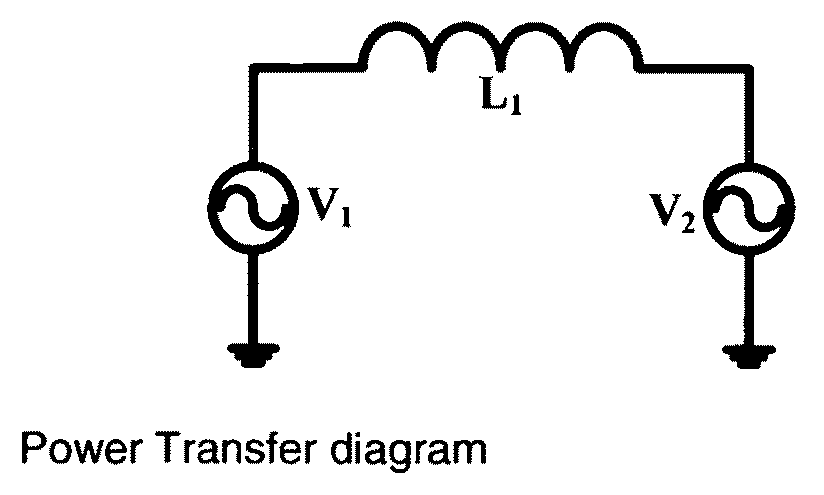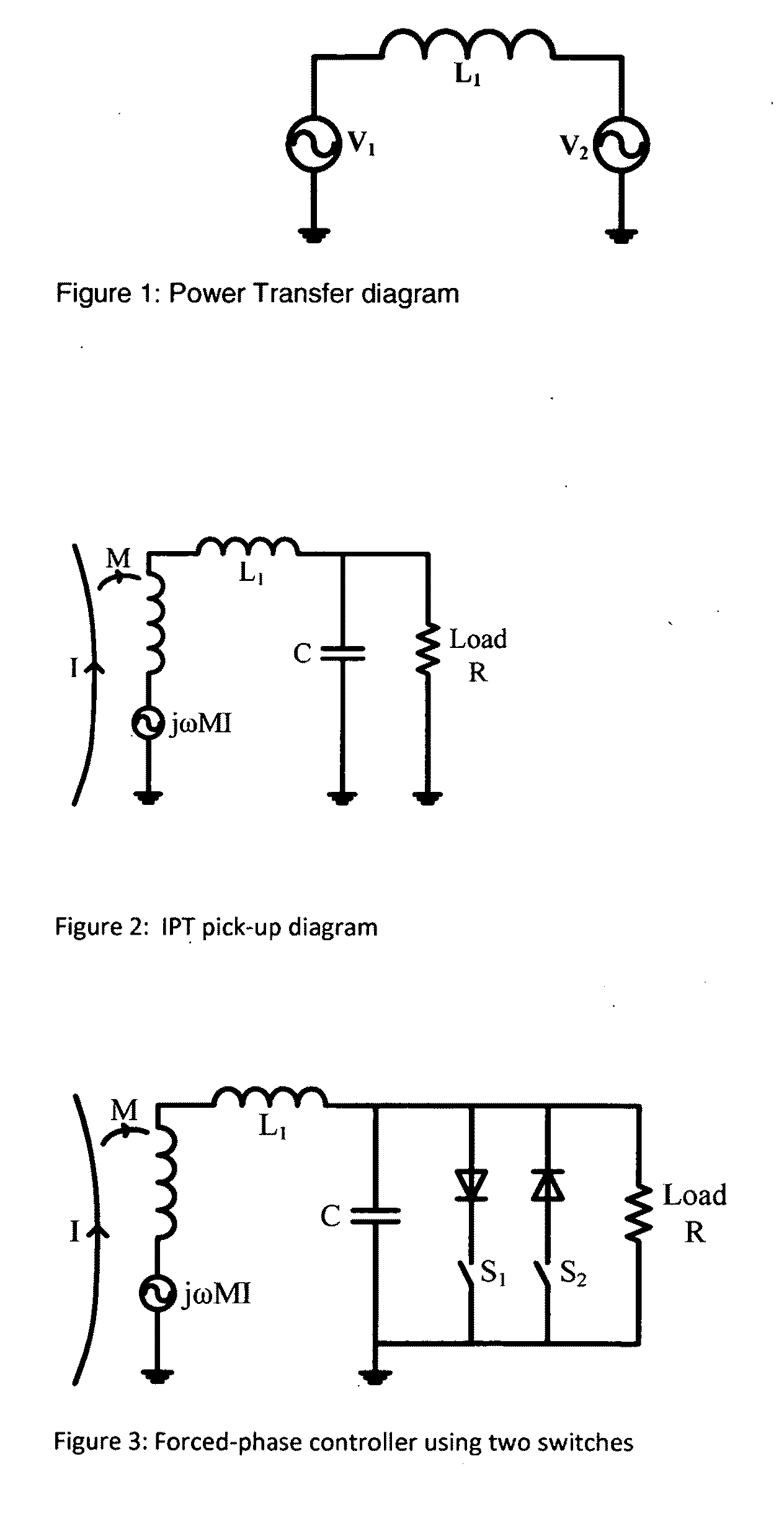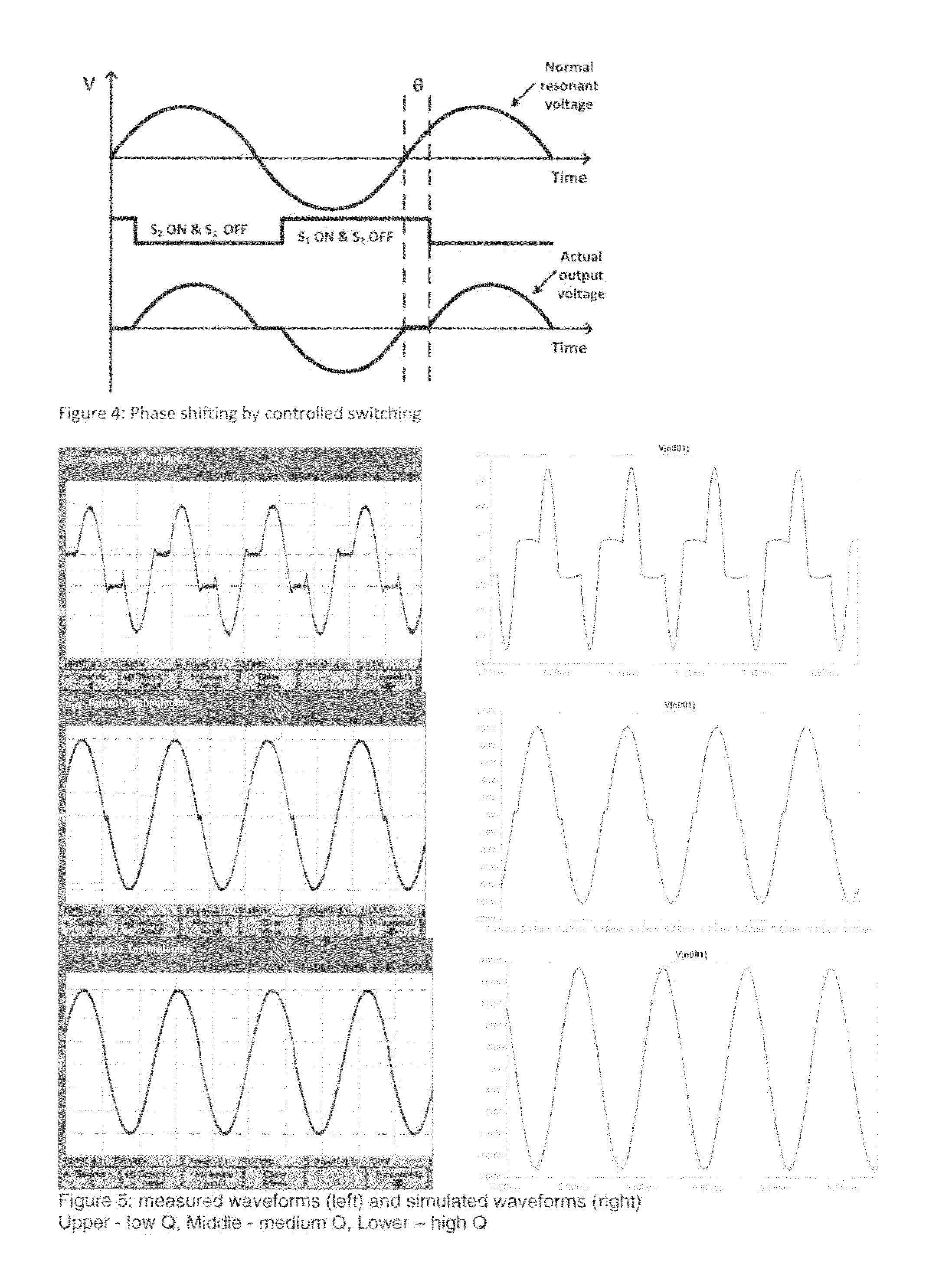Inductively coupled ac power transfer
a technology of inductive coupling and power transfer, applied in the direction of electric vehicle charging technology, inductance, transportation and packaging, etc., can solve the problem of clear less efficiency than, and achieve the effect of small loss
- Summary
- Abstract
- Description
- Claims
- Application Information
AI Technical Summary
Benefits of technology
Problems solved by technology
Method used
Image
Examples
Embodiment Construction
[0031]FIG. 1 is a well-known diagram in Power Systems and is used to describe how power is transferred from a generator to another generator or load. The first generator has an output voltage V1 and is connected to the second voltage V2 through an inductor L1. If the phase angle between V1 and V2 is α then the power transferred is given by
P=V1V2sin(α)X
[0032]Where X is the reactance of inductor L1 at the frequency of operation. This is a generic formula using symbols common in Power Systems analysis.
[0033]In an IPT system this same diagram may be interpreted slightly differently as shown in the circuit of FIG. 2. In this case V1 is the voltage induced in the pick-up coil L1 by a current flowing through an IPT track. Thus V1=jωMI where I is the track current. V2 is now the voltage across the tuning capacitor, C, and is the resonant voltage in the IPT system. L1 and C comprise a parallel resonant circuit. In all usual circumstances the phase angle {acute over (α)}, the angle between V1...
PUM
 Login to View More
Login to View More Abstract
Description
Claims
Application Information
 Login to View More
Login to View More - R&D
- Intellectual Property
- Life Sciences
- Materials
- Tech Scout
- Unparalleled Data Quality
- Higher Quality Content
- 60% Fewer Hallucinations
Browse by: Latest US Patents, China's latest patents, Technical Efficacy Thesaurus, Application Domain, Technology Topic, Popular Technical Reports.
© 2025 PatSnap. All rights reserved.Legal|Privacy policy|Modern Slavery Act Transparency Statement|Sitemap|About US| Contact US: help@patsnap.com



